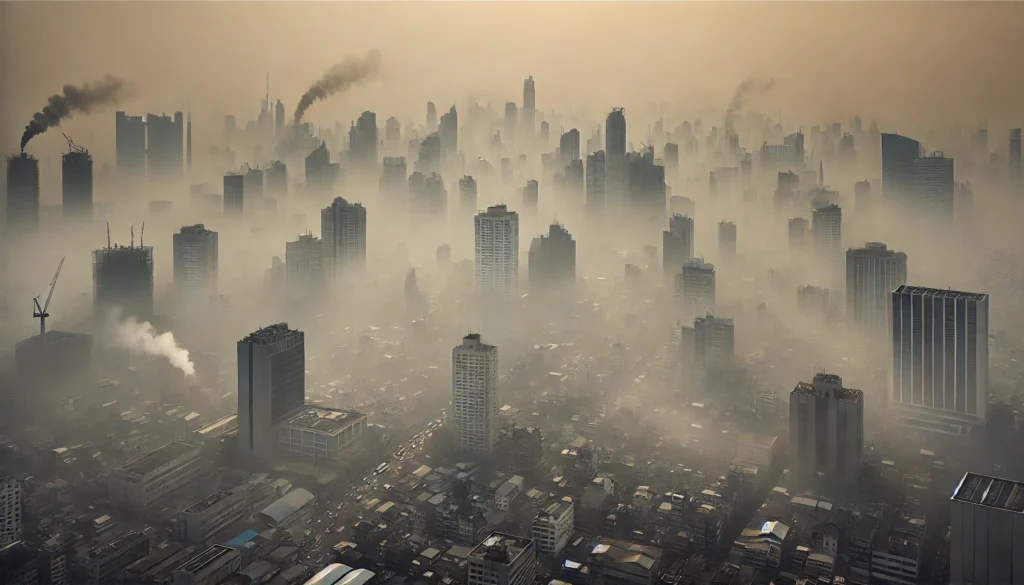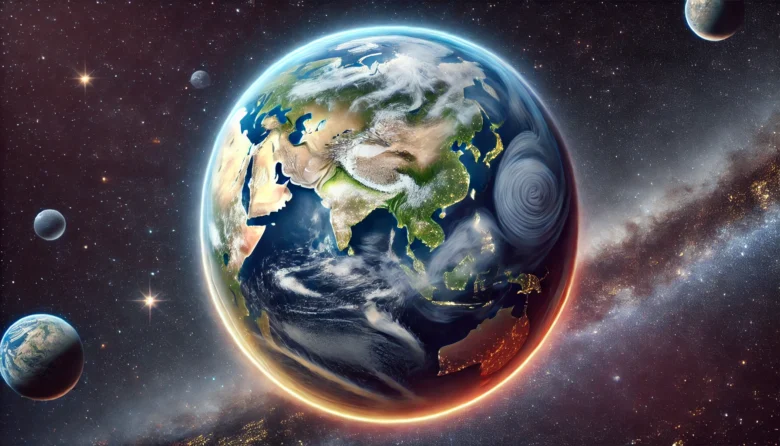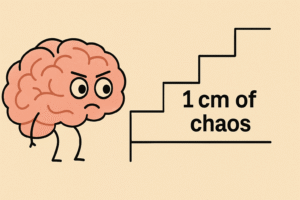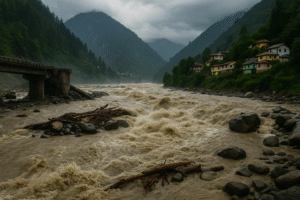The atmosphere is more than just the air we breathe—it’s a complex mixture of gases that play crucial roles in maintaining life on Earth. One of the most critical components of our atmosphere is the ozone layer, which shields us from harmful ultraviolet (UV) radiation. Unfortunately, human activities have introduced pollutants that not only degrade air quality but also threaten the delicate balance of this protective layer. In this blog, we’ll explore the chemistry of the atmosphere, focusing on the ozone layer and the effects of pollution on this vital component of Earth’s defence system.
Understanding the Ozone Layer
The ozone layer, located in the stratosphere, roughly 10 to 30 kilometres above the Earth’s surface, is composed of ozone (O₃) molecules. Ozone is a naturally occurring gas that forms when oxygen molecules (O₂) are split by UV radiation, and the resulting oxygen atoms bond with other oxygen molecules to form O₃.
This layer is crucial because it absorbs most of the Sun’s harmful UV-B and UV-C radiation, which can cause skin cancer, cataracts, and other health problems. Without the ozone layer, life on Earth would be exposed to far more UV radiation, leading to devastating consequences for ecosystems and human health.
Ozone Formation and Depletion
The formation and depletion of ozone in the stratosphere occur through a delicate balance of natural processes. In simple terms, ozone is constantly being created and destroyed in a cycle known as the ozone-oxygen cycle. When UV light breaks down an ozone molecule into an oxygen molecule (O₂) and a single oxygen atom, the free oxygen atom can later recombine with O₂ to form ozone again.
However, this natural balance has been disrupted by human-made chemicals, especially chlorofluorocarbons (CFCs). CFCs, once widely used in refrigeration, air conditioning, and aerosol sprays, release chlorine atoms when they are broken down by UV radiation in the stratosphere. These chlorine atoms can destroy thousands of ozone molecules, significantly thinning the ozone layer.

The Ozone Hole and Global Action
One of the most visible consequences of ozone depletion is the ozone hole over Antarctica. Discovered in the 1980s, this large area of thinning ozone occurs during the Southern Hemisphere’s spring (September to November) due to the presence of polar stratospheric clouds (PSCs), which enhance the destructive effects of CFCs.
The good news is that global awareness led to the Montreal Protocol in 1987, an international treaty aimed at phasing out the production and use of CFCs and other ozone-depleting substances. Since then, the ozone layer has shown signs of recovery, though it will take several decades for it to fully heal.
Atmospheric Pollution and Its Effects
While the recovery of the ozone layer is promising, the broader issue of atmospheric pollution remains a significant challenge. Pollution comes in many forms, from industrial emissions to vehicle exhaust, and it has a profound impact on both the environment and human health.
Air Pollutants and Their Sources
The key pollutants that contribute to air pollution include:
Nitrogen oxides (NOₓ): Produced mainly from vehicle emissions and industrial processes, NOₓ contributes to smog and acid rain. It also reacts with volatile organic compounds (VOCs) in the presence of sunlight to create ground-level ozone, which is harmful to humans and crops.
Sulfur dioxide (SO₂): Emitted primarily from burning fossil fuels, SO₂ can react with water vapour in the atmosphere to form sulfuric acid, leading to acid rain, which damages forests, soils, and water bodies.
Particulate matter (PM): Tiny particles from combustion processes, construction, and agricultural activities can penetrate deep into the lungs, leading to respiratory and cardiovascular problems.
Carbon monoxide (CO): This colourless, odourless gas is released during incomplete combustion of fuels. High levels of CO can be deadly as it interferes with the blood’s ability to carry oxygen.
Volatile organic compounds (VOCs): Released by vehicles, solvents, and industrial activities, VOCs react with NOₓ to produce ground-level ozone and contribute to smog formation.
The Formation of Ground-Level Ozone
While stratospheric ozone is essential for protecting life on Earth, ground-level ozone—a key component of smog—is harmful to human health. Ground-level ozone forms when NOₓ and VOCs react in the presence of sunlight. This type of ozone is particularly dangerous because it can cause respiratory issues like asthma, bronchitis, and reduced lung function, especially in children and the elderly.
Climate Change and Air Pollution: A Vicious Cycle
Air pollution is not only harmful to human health but also contributes to climate change. For example, black carbon (a component of particulate matter) absorbs sunlight and heats the atmosphere, contributing to global warming. At the same time, climate change can worsen air quality by increasing the frequency and severity of heat waves, which in turn leads to higher levels of ozone and particulate pollution.
Moreover, pollutants like methane (CH₄) and carbon dioxide (CO₂), both of which are greenhouse gases, contribute to the warming of the planet. This warming can alter weather patterns, leading to more stagnant air conditions that trap pollutants near the ground, further worsening air quality.
The Human and Environmental Impact
The impact of pollution on human health is well-documented. Exposure to high levels of air pollution has been linked to respiratory and cardiovascular diseases, as well as premature death. According to the World Health Organization (WHO), air pollution is responsible for around 7 million deaths worldwide each year.
In addition to health effects, pollution has significant environmental impacts. Acid rain, for instance, can degrade soil quality, harm aquatic life, and damage buildings and infrastructure. Smog can reduce visibility, leading to transportation hazards, and particulate matter can settle on plant surfaces, reducing their ability to photosynthesize.
Case Study: Delhi’s Air Quality Crisis
A striking example of the impact of pollution can be found in Delhi, India. Each winter, the city experiences severe air pollution due to a combination of vehicle emissions, industrial activity, crop burning in surrounding regions, and weather patterns that trap pollutants in the city.
During these months, PM2.5 levels (fine particulate matter smaller than 2.5 micrometres) often exceed safe limits by several times, posing serious health risks to the city’s population. The Indian government has taken steps to address the issue, including implementing stricter emissions standards and encouraging the use of cleaner fuels, but the problem remains a major public health concern.
Conclusion
The chemistry of the atmosphere is a delicate balance that supports life on Earth, and the ozone layer is a vital part of this protective system. However, pollution, largely driven by human activity, continues to disrupt this balance, contributing to both the degradation of the ozone layer and the broader challenges of air pollution.
While international efforts like the Montreal Protocol have shown that positive change is possible, the fight against pollution requires continued action at both the global and local levels. From reducing emissions to adopting cleaner technologies, we all have a role to play in protecting our atmosphere.
Author’s Note
Understanding the chemistry of the atmosphere gives us a glimpse into the complex systems that keep our planet habitable. As we work towards cleaner air and a healthier ozone layer, small steps can lead to significant change. Let’s continue to make conscious choices for a better future.
G.C., Ecosociosphere contributor.
References and Further Reading
- NASA: The Ozone Layer
- World Health Organization: Air Pollution
- World Ozone Day 2023: Bridging the Ozone Gap for a Sustainable Future. https://krishijagran.com/blog/world-ozone-day-2023-bridging-the-ozone-gap-for-a-sustainable-future/
- This Common Air Pollutant Spikes in Summer – LHSFNA. https://www.lhsfna.org/this-common-air-pollutant-spikes-in-summer/
- World Ozone Day 2023: Bridging the Ozone Gap for a Sustainable Future. https://krishijagran.com/blog/world-ozone-day-2023-bridging-the-ozone-gap-for-a-sustainable-future/
- Atmospheric Chemistry – Kenan Fellows Program for Teacher Leadership. https://kenanfellows.org/lesson_plan/atmospheric-chemistry-unit/
- Where is the Ozone Layer | Actforlibraries.org. http://www.actforlibraries.org/where-is-the-ozone-layer/
- Causes and Effects of Ozone Depletion [Free Essay Sample], 716 words | WritingBros. https://writingbros.com/essay-examples/causes-and-effects-of-ozone-depletion/
- September 16 is the International Day of Preservation of the Ozone Layer. ⋆ WWW.SAVOL-JAVOB.COM. https://www.savol-javob.com/en/September-16-is-the-International-Day-for-the-Preservation-of-the-Ozone-Layer/
- 32.09: Biohydrogen – An Introduction – Biology LibreTexts. https://bio.libretexts.org/Bookshelves/Biochemistry/Fundamentals_of_Biochemistry_(Jakubowski_and_Flatt)/Unit_IV_-_Special_Topics/32%3A_Biochemistry_and_Climate_Change/32.09%3A__Biohydrogen_-_An_Introduction
- Across state line from East Palestine, repeated air permit violations at a petrochemical plant – The New Lede. https://www.thenewlede.org/2023/03/across-state-line-from-east-palestine-repeated-air-permit-violations-at-a-petrochemical-plant/
- 24 Air Quality Engineer Interview Questions and Answers. https://www.interviewquestionspdf.com/2023/08/24-air-quality-engineer-interview.html
- Wildfires, climate change and air pollution: a vicious cycle – Clean Air Fund. https://www.cleanairfund.org/news-item/wildfires-climate-change-and-air-pollution-a-vicious-cycle/
- Urban Rewilding and Reducing Climate Risks: Back to Basics. https://gdrc.org/u-gov/rewild/rewild-04.html
- Who, me? How we can mitigate air pollution and improve our health | Sierra Club Canada. https://www.sierraclub.ca/en/ontario-chapter/2022-02-24/who-me-how-we-can-mitigate-air-pollution-and-improve-our-health
- Ramadan, R. (2011). Identifying and Evaluating Air Filtration Methods for Personal Protection from Airborne Particulate Matter.
- THE GROWING DISEASE OF RHEUMATOID ARTHRITIS IN INDIA. https://aadar.co/blogs/aadarblog/p-b-the-growing-disease-of-rheumatoid-arthritis-in-india-b-p-p-p




